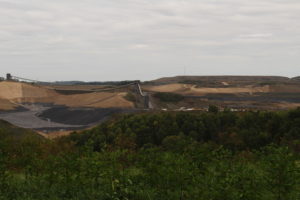
A report was recently released by Beyond Plastics, a non-profit organization based out of Bennington College in Vermont that seeks to end plastic pollution.
This 21-page report does a wonderful job of explaining the comparisons in climate-changing emissions from the coal industry and the plastic industry. Plastics manufacturing currently emits the CO2 equivalent of 57 coal-fired 500-megawatt power plants; however, if industry is allowed to expand at their planned rate, their emissions rates would add the equivalent of 27 coal-fired 500-megawatt plants to our yearly output by the year 2025 (that’s just three years away).
From a climate lens, this is an important comparison: it’s important for policymakers to recognize the climate implications of the petrochemical and plastics facilities that they are permitting across the country. Perhaps the comparison to coal power plants is the only one that will resonate with policymakers; however, the title gives the impression that this report will be about more than just carbon emissions.
“The New Coal” is such a weighted statement, but you can only know that it’s weighted if you know about coal communities.
There is so much more to the coal industry than climate impacts, and it’s exhausting for coal communities to constantly be the object of the well-intended who don’t understand how circumstances throughout history shape our nuanced present. Centering carbon emissions in a discussion about coal ignores the human impacts (both bad and good) that inform the daily lives of people who live in coal communities, who were raised by miners or are themselves miners or are friends with people connected to the industry – and who do not deserve to have their lived experiences boiled down to “Coal caused climate change.”
Looking at the title of this report, you might expect a discussion about how miners were asked to sacrifice their health and safety just as those working in petrochemical facilities are: black lung is a well-known and horrific disease that many miners developed as they worked, breathing in the dust created from active mining. Similarly sickened by the air they breathe, workers in the petroleum industry – from extraction to refining – are put at an increased risk of developing numerous forms of cancers.
The title might also lead you to expect a conversation about how both the coal industry and the oil and gas industry use their money and influence to protect their own interests at all levels of government. That influence doesn’t only come from donations to campaigns or regular meetings with critical politicians: part of the fossil fuel industry’s ability to get people to sacrifice their health for jobs, to get governments to subsidize their activities, comes from the narrative they spin about their products, and the pride that people feel for being part of producing something that has shaped the way our whole world has developed.
The title might also lead you to assume that, for places where plastic is being made or its feedstock being extracted, coal was there first; this assumption is wrong. Oil and gas has been extracted across the country for decades. Plastic has been manufactured for decades. The plastic industry and the coal industry have operated in tandem for decades, all contributing their “fair” share to the climate crisis. This is evident in current emissions data and by examining the trends in global greenhouse gas emissions.
Yes, decision-makers are hoping that, in Appalachia, the petrochemical and plastic industry will be the new coal. When Joe Manchin says he wants “clean manufacturing” in Appalachia, this is what he means — he means plastics. He wants to see investment in a new industry funneled to former (or current) coal communities: the idea has merit, but his application leaves a lot to be desired.
But so far, in Appalachia, no: this industry is not the new coal. Fracking isn’t reliably replacing revenues generated by the coal industry, and it hasn’t led to sustainable economic growth. The industry is employing people, but fracked-gas producing counties in Appalachia trailed the national average in job growth and personal income growth, while people tended to leave those counties. There’s reason to suspect that, even if/when petrochemical facilities like cracker plants come online, jobs in this sector still won’t be reliable for our communities.
Here’s the best part, though: if we, as the people of Appalachia, don’t want to rely on multinational corporations to tell us what our futures and communities will be like, plastic never has to be the new coal.


Bravo, Sarah!